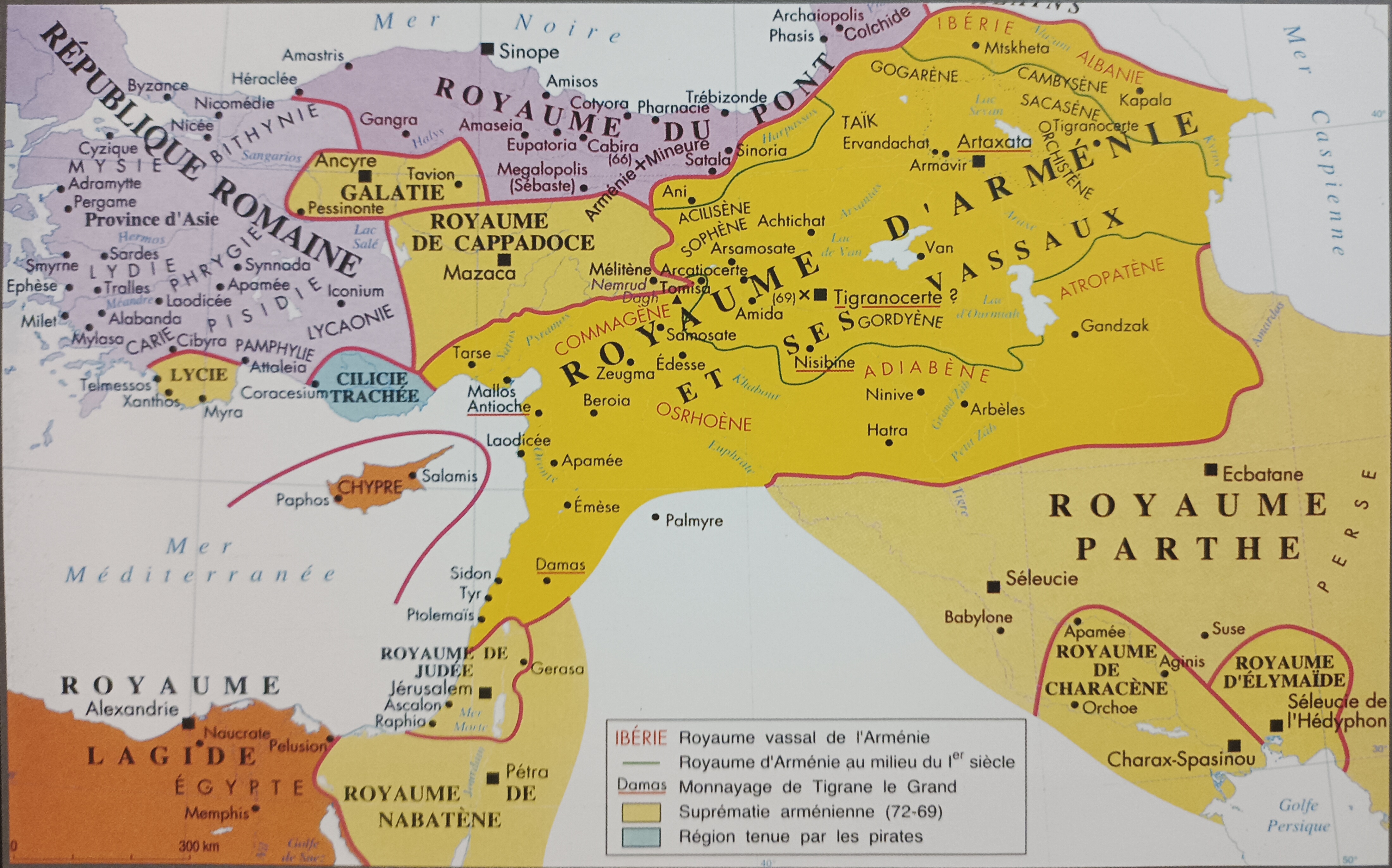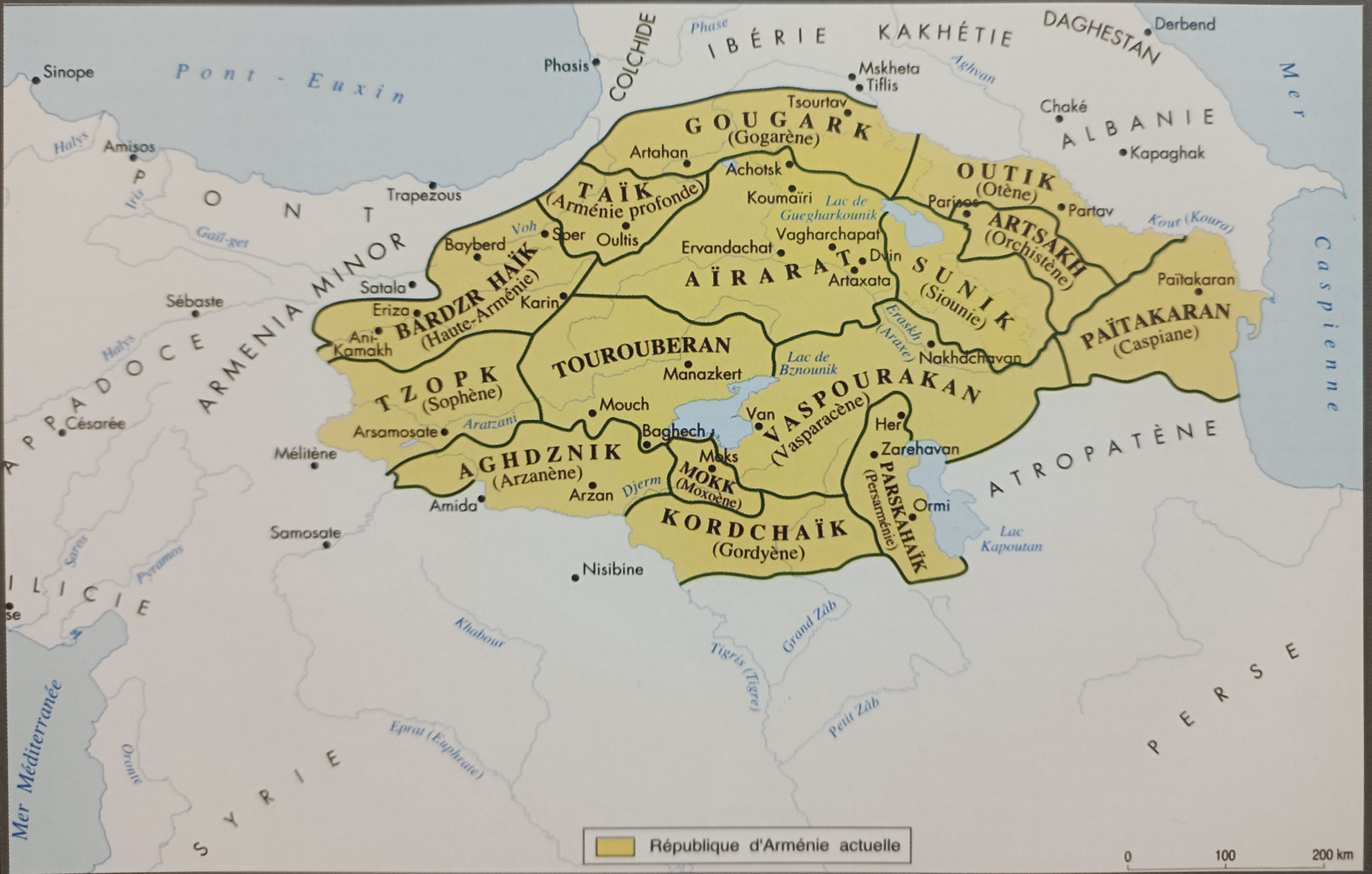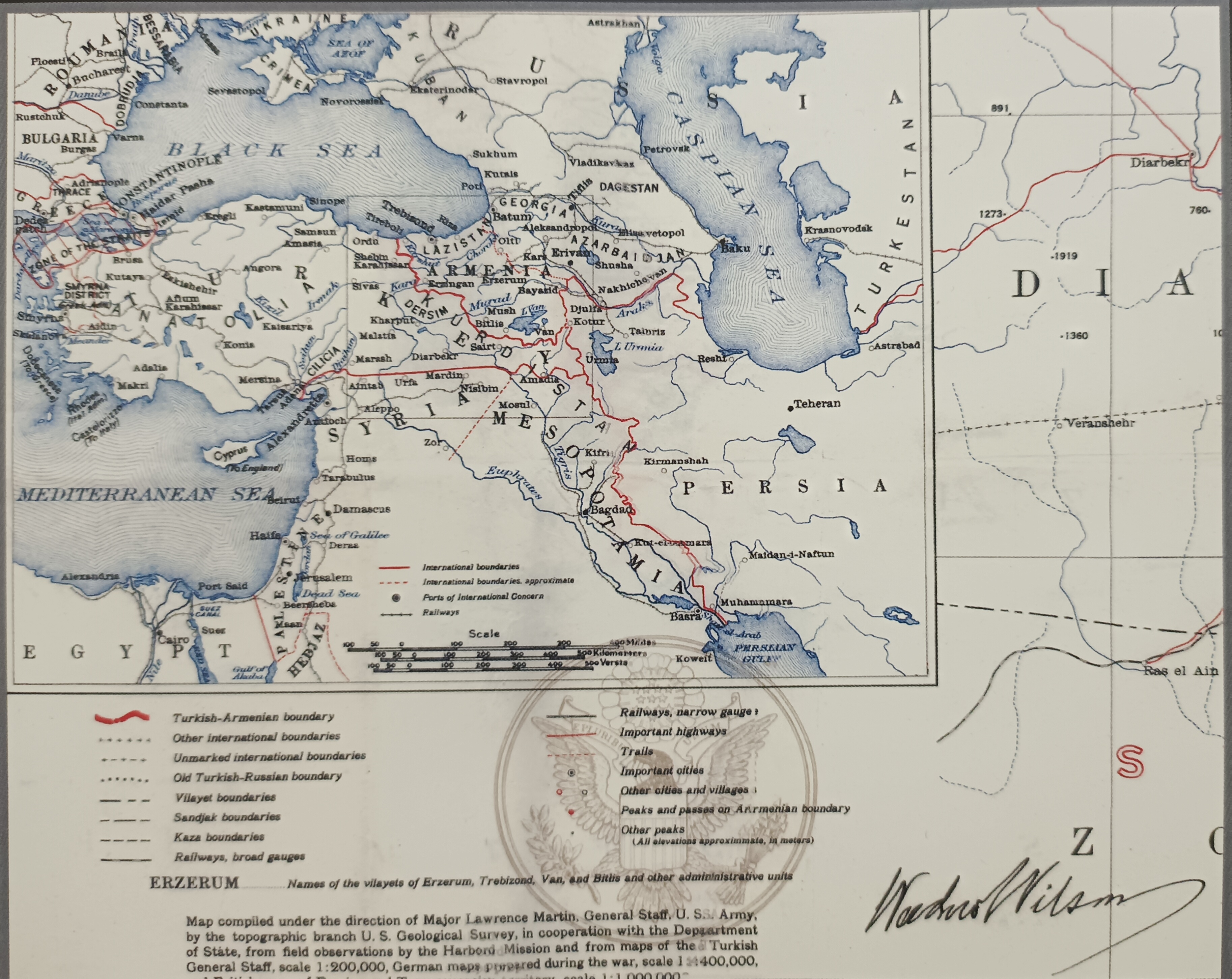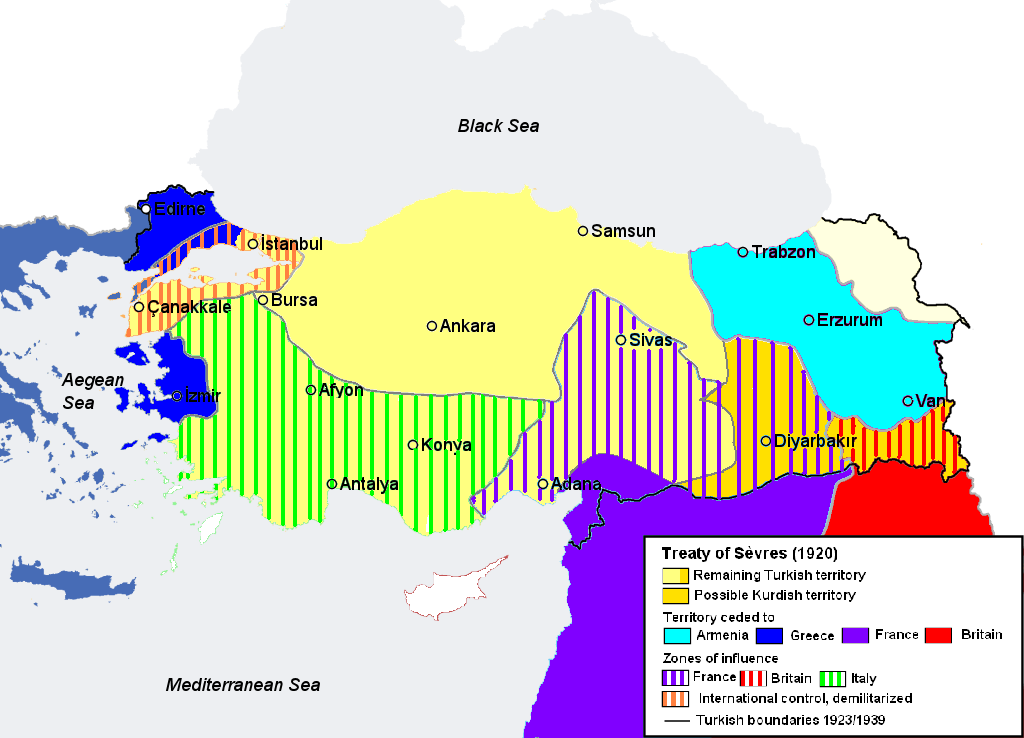
The borders of the Armenian Major during the reign of Tigranes the Great (I century B.C.). Its territory is marked by yellow. According to the ancient Greek historian and gaographer Strabon, Armenia was the most spacious kingdom in the Universe after Parthia, from Cappadocia to the Caspian sea.

Administrative division of the Armenia Major, described in the "Geography" of the beginning of the VII century, which is ascribed to a famous Armenian scientist Anania Shirakatsi. The light yellow color indicates the territory of the modern Republic of Armenia.

The borders of Armenia kingdom Urartu in the period of its golden age (786 - 764 B.C.)


The Treaty of Sèvres (French: Traité de Sèvres) was a 1920 treaty signed between the Allies of World War I and the Ottoman Empire. The treaty ceded large parts of Ottoman territory to France, the United Kingdom, Greece and Italy, as well as creating large occupation zones within the Ottoman Empire. It was one of a series of treaties that the Central Powers signed with the Allied Powers after their defeat in World War I. Hostilities had already ended with the Armistice of Mudros.

Arshakuni (Վարազդատ in Armenian; Latinized as Varasdates), later King of Armenia, was the last known recorded Ancient Olympic victor who won the boxing event at the 291st Olympiad (in 360 A.D.)
We have 745 guests and no members online